Sisters (Amaterasu Goddess of Sun and Holy Mary of Civitavecchia)Various elements:
2013 - 2015 (1613 - 1615)
Flag
Amaterasu Goddess of Sun
digital photography on fabric, 180 x 130 cm
2013Installation
Holy Mary of Civitavecchia, (replica of the Civitavecchia Madonnina from the shrine of Medjugorje), marble powder and epoxy resin, wood and packaging materials, transport documents, 80 x 40 x 30 cm
2013 Frottage
2 elements
pencil on paper
100 x 70 cm each
2015
With the support of Tokyo Metropolitan Foundation for History and Culture, Tokyo Wonder Site (Japan) and financed with a grant provided by Project DE. / MO. MOVIN’UP
EN
In 1995, in the backyard of the Gregori family’s house in Civitavecchia (Rome), a small statue of the Virgin Mary was seen weeping blood fourteen times. The miracle was reported in the media and discussed in the Vatican. The local church of St. Agostino, where the statue is preserved, is now a place of pilgrimage. The statue originates from the shrine of Medjugorje (Bosnia-Herzegovina) and was bought by the Gregori family as a souvenir.
In 1995, in the backyard of the Gregori family’s house in Civitavecchia (Rome), a small statue of the Virgin Mary was seen weeping blood fourteen times. The miracle was reported in the media and discussed in the Vatican. The local church of St. Agostino, where the statue is preserved, is now a place of pilgrimage. The statue originates from the shrine of Medjugorje (Bosnia-Herzegovina) and was bought by the Gregori family as a souvenir.
Holy Mary of Civitavecchia (2013) is an identical copy of that statue, bought on Medjugorje’s webshop. The statue was shipped from Italy to Japan in a wooden case, on the occasion of a solo exhibition. The work is part of a diptych with Amaterasu Goddess of Sun (2013), a photo printed on a flag and portraying a copy of the Statue of Liberty found in Ishinomaki, a city 100 km far from the Nuclear Power Plant of Fukushima Dai-ichi, heavily destroyed in 2011 by the tsunami.
During this research, the artist discovered that the town of Civitavecchia, where the above-mentioned miracle took place, is connected to the city of Ishinomaki. Their sisterhood has its origins in 1613, the year in which the samurai Hasekura Tsunenaga sailed from Ishinomaki and arrived in Civitavecchia (in 1615) to meet the Pope in Rome.
The shipment of the work Holy Mary of Civitavecchia from Italy to Japan has a symbolic value: it traces the missing part of the samurai’s route, who arrived in Europe across the Oceans.
IT
Nel 1995 una piccola statua della Vergine Maria, che si trovava nel giardino della famiglia Gregori a Civitavecchia e proveniente dal santuario cristiano di Medjugorje (Bosnia ed Erzegovina), fu vista lacrimare sangue per quattordici volte, suscitando stupore sia a livello mediatico che tra i credenti e il clero. Da allora la statuetta, custodita nella parrocchia locale di Sant'Agostino, è esposta alla venerazione dei fedeli.
Holy Mary of Civitavecchia (2013) è una copia identica di quella statua, acquistata sul sito del negozio di suvenier di
Medjugorje. Il lavoro costituisce un dittico con Amaterasu Goddess of Sun (2013), una fotografia stampata su bandiera e raffigurante una replica della Statua della Libertà trovata a
Ishinomaki, una città
a 100 km dalla centrale nucleare di Fukushima Dai-ichi e distrutta dallo tsunami del 2011.
Durante questa ricerca è stato scoperto che la città di Civitavecchia, luogo del miracolo, è unita a Ishinomaki da un gemellaggio. La partnership tra le due città ha le sue origini nel 1613, anno in cui il samurai
Hasekura Tsunenaga
partì da Ishinomaki e sbarcò a Civitavecchia (nel 1615) per poi raggiungere Roma, dove era diretto ad incontrare il Papa.
La spedizione della cassa dall’Italia al Giappone, contenente
Holy Mary of Civitavecchia, ha quindi un valore simbolico e il gesto è parte integrante del lavoro. Il percorso della cassa infatti traccia la parte mancante del tragitto del samurai, che arrivò in Europa attraverso gli oceani.

The route of Hasekura Tsunenaga, Ishinomaki - Civitavecchia, 1613-1615.

Statue of Liberty of Ishinomaki damaged by the tsunami on March 11, 2011, Japan.

“The Miracle of Civitavecchia”, 1995.
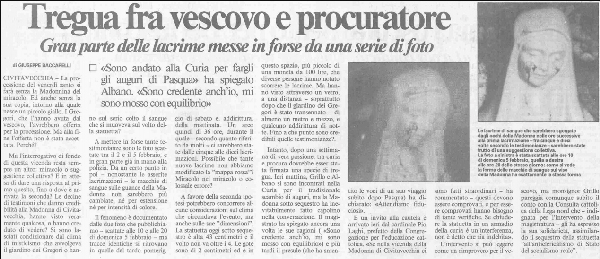
An article from the national press concerning the “Miracle of Civitavecchia,” published in Il Messaggero, April 13, 1995, p. 8.

Statue of the samurai Hasekura Tsunenaga, Civitavecchia, 2015.


Frottages of the plaques from the statue of Hasekura Tsunenaga in Civitavecchia,
pencil on paper, 100 × 70 cm each, 2015.
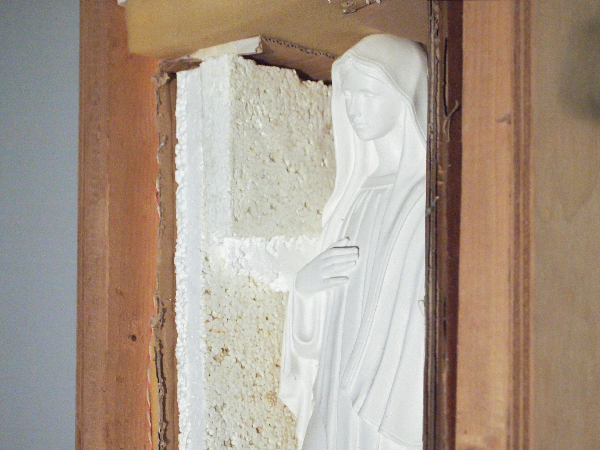


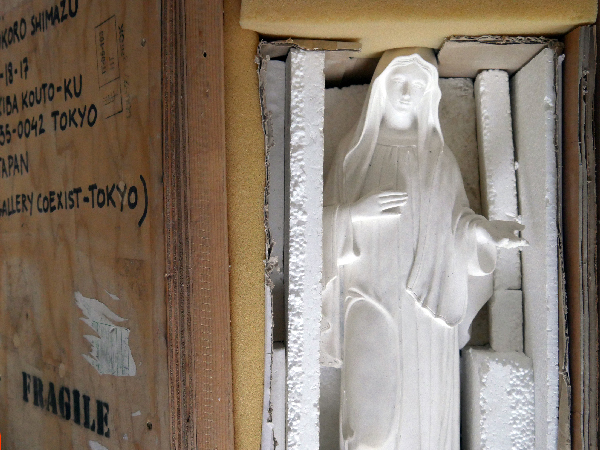
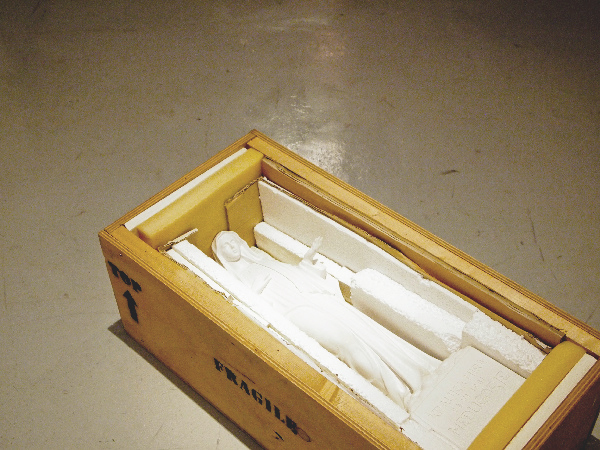
Ryts Monet, Holy Mary of Civitavecchia, 2013.
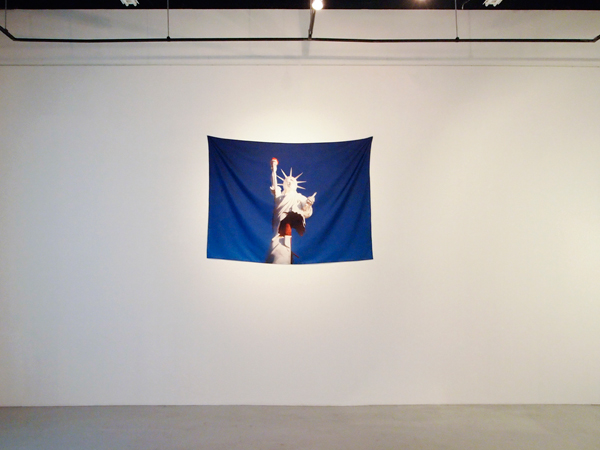
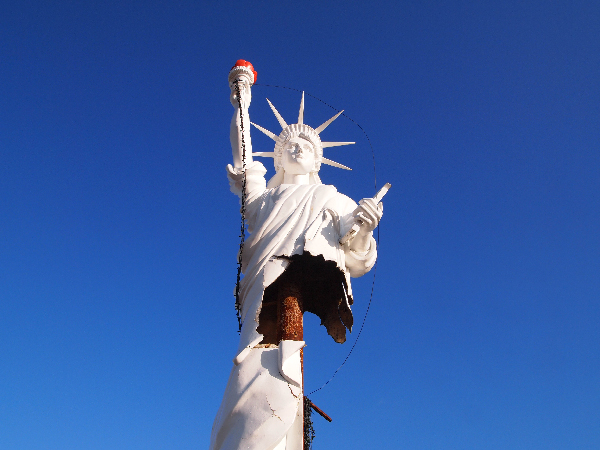
Ryts Monet, Ameterasu Goddess of Sun (flag), digital photography on fabric, 180 x 130 cm, 2013.
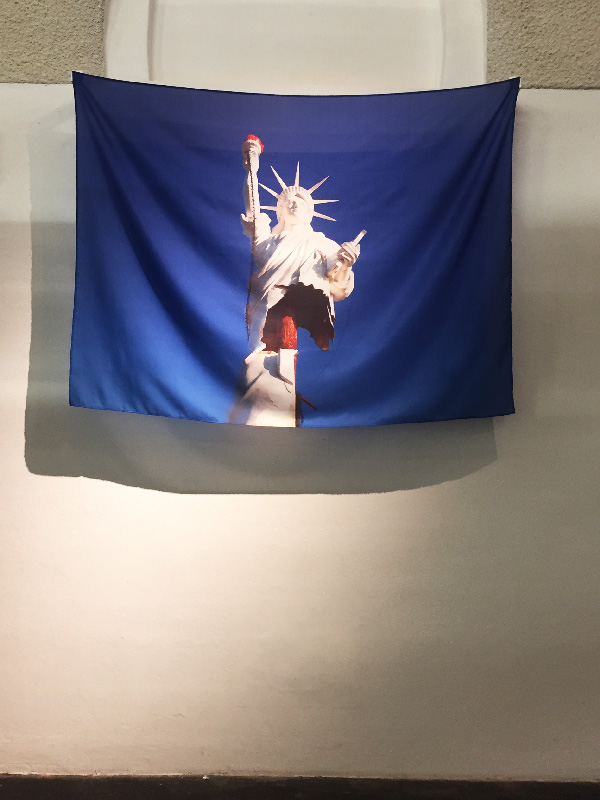
Ryts Monet, Amaterasu Goddess of Sun (flag),
installation view at Museums Quartier Wien Q21, Vienna, Austria, 2019.
Photograph by Pablo Chiereghin